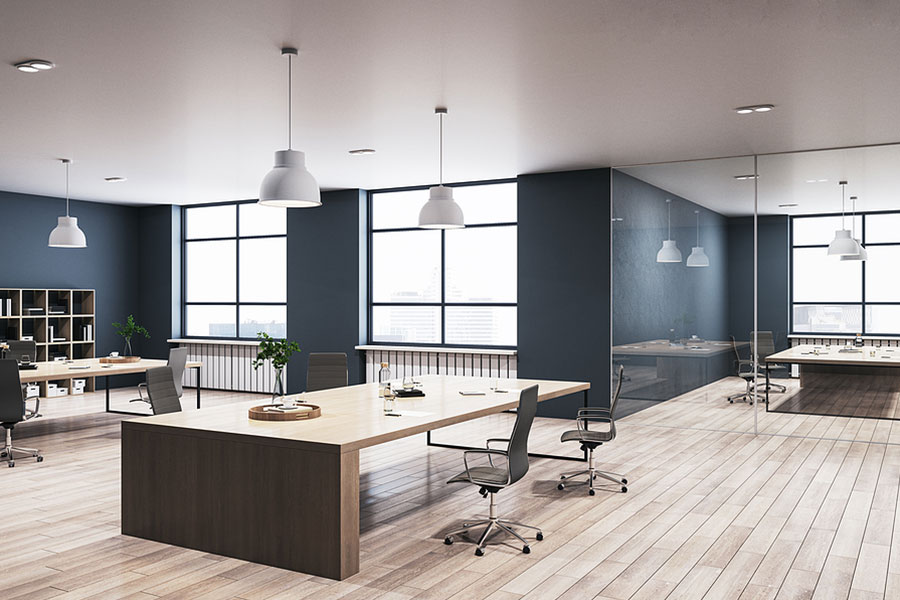When designing your workplace, there’s more to consider than just aesthetics or productivity – accessibility should be a top priority. Whether it’s a brand-new fit-out or a complete refurbishment, integrating accessibility into your office design isn’t just about compliance; it demonstrates your commitment to building an inclusive and respectful environment for everyone.
An accessible workplace goes beyond functionality. It’s a space that empowers your team, fosters inclusivity, and values diversity. Accessible design ensures all employees can contribute their best work, collaborate effortlessly, and feel equally valued.
While many companies are adopting inclusive cultures in their branding, creating a physically inclusive workspace that accommodates vendors, employees and visitors with disabilities is still a critical next step. This guide explores how to make accessibility the forefront of your office fit-out, with actionable advice on everything from layout modifications to sensory considerations.
Designing an Accessible Workplace
Physical Office Accessibility
To create a work environment that everyone can access effortlessly:
- Hallways and Doorways: Ensure doorways are at least 32 inches wide and hallways are spacious enough for unhindered movement, including wheelchair access. Remove clutter or obstructions that could impede navigation
- Ramps and Lifts: Connect different floors with ramps or elevators. Assess your building for potential barriers and consult an accessibility expert if necessary. These features enable individuals with mobility issues to move comfortably throughout your space
- Break and Common Areas: These should be accessible to everyone. Lower water fountains and install adaptive surfaces to ensure inclusivity in all shared spaces
Adjustable Office Furniture
Ergonomic furniture can make your office comfortable and inclusive for all employees:
- Desks: Adjustable desks allow employees to easily alternate between sitting and standing positions. This promotes better posture and boosts overall well-being
- Chairs: Adjustable chairs with lumbar support and customisable armrests provide superior comfort, catering to diverse body types and needs
- Ergonomic Accessories: Provide options like wrist-friendly keyboards and supportive mouse accessories to promote efficiency and reduce strain
The result? Fewer physical discomforts and increased productivity across every team.
Accessible Meeting Spaces
Meeting rooms are the heart of workplace collaboration, and they should accommodate all participants equally:
- Room Dimensions: Ensure plenty of space for wheelchairs to manoeuvre, and opt for round tables to remove obstructions.
- Access Features: Include lowered counters for presentations, assistive listening systems and sufficient lighting to cater to different sensory needs. Proper ventilation is also crucial for those with respiratory sensitivities
Everyone deserves to have a seat – literally and figuratively – at the table.
Toilet Accessibility
Toilets, shower rooms and bathrooms are often overlooked during office fit-outs, yet they are integral to workplace accessibility:
- Install grab bars and ensure sinks and fixtures are wheelchair-accessible
- Provide large, stall-inclusive restrooms with ample manoeuvring space for mobility aids
Accessible restrooms demonstrate thoughtfulness and a commitment to inclusivity.
Additional Considerations for Accessibility
Braille Signage
Don’t underestimate the value of clear navigation for employees and visitors with visual disabilities. Strategically place braille signage at entrances, corridors and other key locations to support their independence.
Lighting and Acoustics
Sensory needs should not be an afterthought. You can accommodate employees effectively by offering:
- Adequate Lighting: Use bright, evenly distributed light to assist those with visual difficulties while reducing strain for all
- Optimised Acoustics: Minimise distractions for individuals with auditory sensitivities by using sound-absorbing materials to control echoes and ambient noise
Allow Service Animals
Service animals, such as guide dogs, often assist employees with specific disabilities. Allowing their entry shows respect for the needs of these employees and helps them perform their duties effectively.
Designated Parking
Accessible parking spaces near building entrances ensure inclusivity from the moment an employee or visitor arrives. These should include designated bays with enough room for mobility aids and step-free pathways leading to the entrance.
Promoting Ergonomic Workspaces
Encourage employees to customise their work environment:
- Adjustable Desks and Chairs: These enable a healthy balance of sitting and standing, supporting diverse physical needs and preferences
- Supportive Tools: Ergonomic keyboards and mice minimise repetitive strain injuries and allow for smoother, longer working sessions
By promoting ergonomic design, you create a more comfortable and productive workplace.
Choosing FIT Interiors for Your Office Refurbishment in Nottingham
Creating an accessible office isn’t just about checking boxes – it’s about creating a workplace that respects and empowers every individual. If your current space feels outdated or restrictive, it’s time to partner with professionals who can transform it.
At FIT Interiors, we specialise in office refurbishments in Nottingham that prioritise accessibility, innovation, and style. Whether you’re looking to refresh your workspace or completely redesign it, our team has the expertise to guide you through every stage – from planning to completion.
Accessible design is not just a trend; it’s a necessity for a thriving, modern workplace. A truly inclusive office sets you apart as a company that values diversity and champions success for everyone. Are you ready to breathe new life into your office? Reach out to FIT Interiors today and take the next step in creating the workplace of tomorrow.

